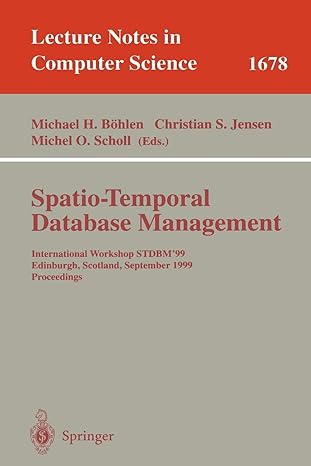The code below is designed to take in an Augmented matrix (Concatenating A and B) and produce the row operations needed to reduced row echelon
The code below is designed to take in an Augmented matrix (Concatenating A and B) and produce the row operations needed to reduced row echelon form. The row operations start from R1(first row operation) to Rn (nth row operation) . However, the code is not working properly. The code needs to be fixed so that it matches the input of the expected outputs below. Additionally, the code should be modified to print out all the elementary matrices along with the corresponding row operations. Elementary matrices are the identity matrices multiplied by the row operation. The code should be able to output the row operations and elementary matrices regardless of the size of the matrix, for example, a 1 x 10, 5 x 5, or 7 x 3. At the end, test if all row operations are valid by multiplying all the elementary matrices together and then multiplying by A, and it should equal to the reduced row echelon form of A.
Code: % Example input A = [2 3 4; 5 5 2; 2 3 3]; B = [0; 0; 0]; A_aug = [A B];
% Compute RREF and row operations [rref_mat, row_ops] = row_operations(A_aug);
function [rref_mat, row_ops] = row_operations(A) % Input: A is the augmented matrix % Output: rref_mat is the RREF of A % row_ops is a cell array containing the row operations performed to obtain the RREF form % Initialization [r, c] = size(A); rref_mat = A; row_ops = cell(r-1, 1); % Perform Gaussian elimination to obtain upper triangular matrix for i = 1:r-1 % Find the first non-zero entry in the ith column pivot_row = i; while (pivot_row <= r) && (rref_mat(pivot_row, i) == 0) pivot_row = pivot_row + 1; end % If there is no non-zero entry in the ith column, move to the next column if pivot_row > r continue; end % Swap rows if necessary to bring pivot to the ith row if pivot_row > i rref_mat([i pivot_row], :) = rref_mat([pivot_row i], :); row_ops{i} = sprintf('R%d <-> R%d', i, pivot_row); end % Scale the ith row to make the pivot equal to 1 pivot = rref_mat(i, i); rref_mat(i, :) = rref_mat(i, :) / pivot; row_ops{i} = sprintf('R%d -> (1/%d) R%d', i, pivot, i); % Eliminate the entries below the pivot in the ith column for j = i+1:r if rref_mat(j, i) ~= 0 factor = rref_mat(j, i); rref_mat(j, :) = rref_mat(j, :) - factor*rref_mat(i, :); row_ops{j-1} = sprintf('R%d -> R%d - (%d) R%d', j, j, factor, i); end end end % Perform back-substitution to obtain reduced row echelon form for i = r:-1:2 for j = i-1:-1:1 if rref_mat(j, i) ~= 0 factor = rref_mat(j, i); rref_mat(j, :) = rref_mat(j, :) - factor*rref_mat(i, :); row_ops{j-1} = sprintf('R%d -> R%d - (%d) R%d', j, j, factor, i); end end end % Round the entries to 6 decimal places to avoid rounding errors rref_mat = round(rref_mat, 6); % Print the row operations for i = 1:length(row_ops) fprintf('R%d: %s ', i, row_ops{i}); end end
Expected Output:
1st row operation: 1st elementary matrix
2nd row operation: 2n elementary matrix
.
nth row operation: nth elementary matrix
Test Cases:
Input:
[3 4 5 1;1.5 2 2.5 1.5]
Output:
(1/3)R1: [ 0.33 0 0 0; 0 1 0 0; 0 0 1 0]
R2 - 1.5R1: corresponding elementary matrix
Input:
[3 4 5 1;1.5 2 2.5 1.5]
Output:
R1 (1 / 2)R1: [ 0.33 0 0 0; 0 1 0 0; 0 0 1 0]
R2 R2 - R2 - R1 : corresponding elementary matrix
R3 R3 - 3R1: corresponding elementary matrix
R4 4R1: corresponding elementary matrix
R2 2R2 : corresponding elementary matrix
R1 R1 -(3/2) : corresponding elementary matrix
R3 R3 - (3/2)R2 : corresponding elementary matrix
Input:
[2 3 4; 5 5 2; 2 3 3]
output:
R1 -> (1/2) R1: corresponding elementary matrix
R2 -> R2 - (5/2) R1: corresponding elementary matrix
R3 -> R3 - (1) R1: corresponding elementary matrix
R2 <-> R3: corresponding elementary matrix
R2 -> (1/5) R2: corresponding elementary matrix
R1 -> R1 - (3/5) R2: corresponding elementary matrix
R3 -> R3 + (2/5) R2: corresponding elementary matrix
R1 -> R1 - (8/3) R3: corresponding elementary matrix
R2 -> R2 + (11/2) R3: corresponding elementary matrix
Step by Step Solution
There are 3 Steps involved in it
Step: 1

See step-by-step solutions with expert insights and AI powered tools for academic success
Step: 2

Step: 3

Ace Your Homework with AI
Get the answers you need in no time with our AI-driven, step-by-step assistance
Get Started


